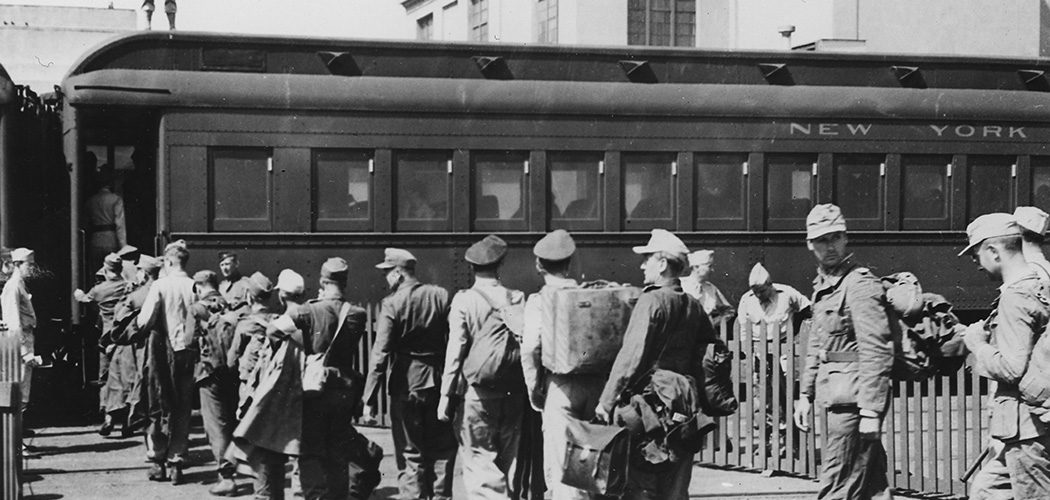
German prisoners of war enter a train car at Mexia in Texas. Some 200,000 German P.O.W.s were housed in Texas from 1943-45. (Image courtesy of the Friends of Camp Hearne)
When the City of Dallas dammed up White Rock Creek to create a reservoir for drinking water east of the city in 1911, neighbors began to flock to the area to enjoy other aspects of the lake.
Swimming, boat races and water skiing were all part of White Rock’s early activities, until a drought in the 1950s meant that Dallas needed the lake for drinking water. Swimming and skiing were outlawed as White Rock Lake began to dry up.
Most well-informed neighbors also know that for a brief period during World War II, 300 German prisoners of war were housed at Winfrey Point, as hundreds of thousands of enemy soldiers were brought back from Germany during the war.
Few, though, may know about when neighbors protested after the lake was chosen as a place to house and treat men and women with venereal disease.
During World War II, the Park and Recreation Board wanted to do its part to support the war, and signed a contract to allow the War Department free use of the land at Winfrey Point (which had been a Civilian Conservation Corps camp) as long as was required. The Army Medical Corps decided that men and women stricken with venereal disease would be treated there, but neighbors protested with such vigor that the board renegotiated the contract and asked that the War Department use the land for something else.
As the war dragged on, the area was used to house German prisoners of war from 1944-1945, housed in North Texas because the conditions replicated North Africa. The Geneva Convention stipulated that prisoners of war must be housed in similar conditions to where they were captured, and Texas fit the bill. The Germans lived on the shores of White Rock Lake, and though they had to build their own fence to keep themselves in, there were complaints about the “Fritz Ritz” conditions at the camp that included educational opportunities, soccer, crafts and even beer.
Check out amazing old pictures and interesting factoids like this one in Sally Rodriguez’s book“Images of America: White Rock Lake.”





